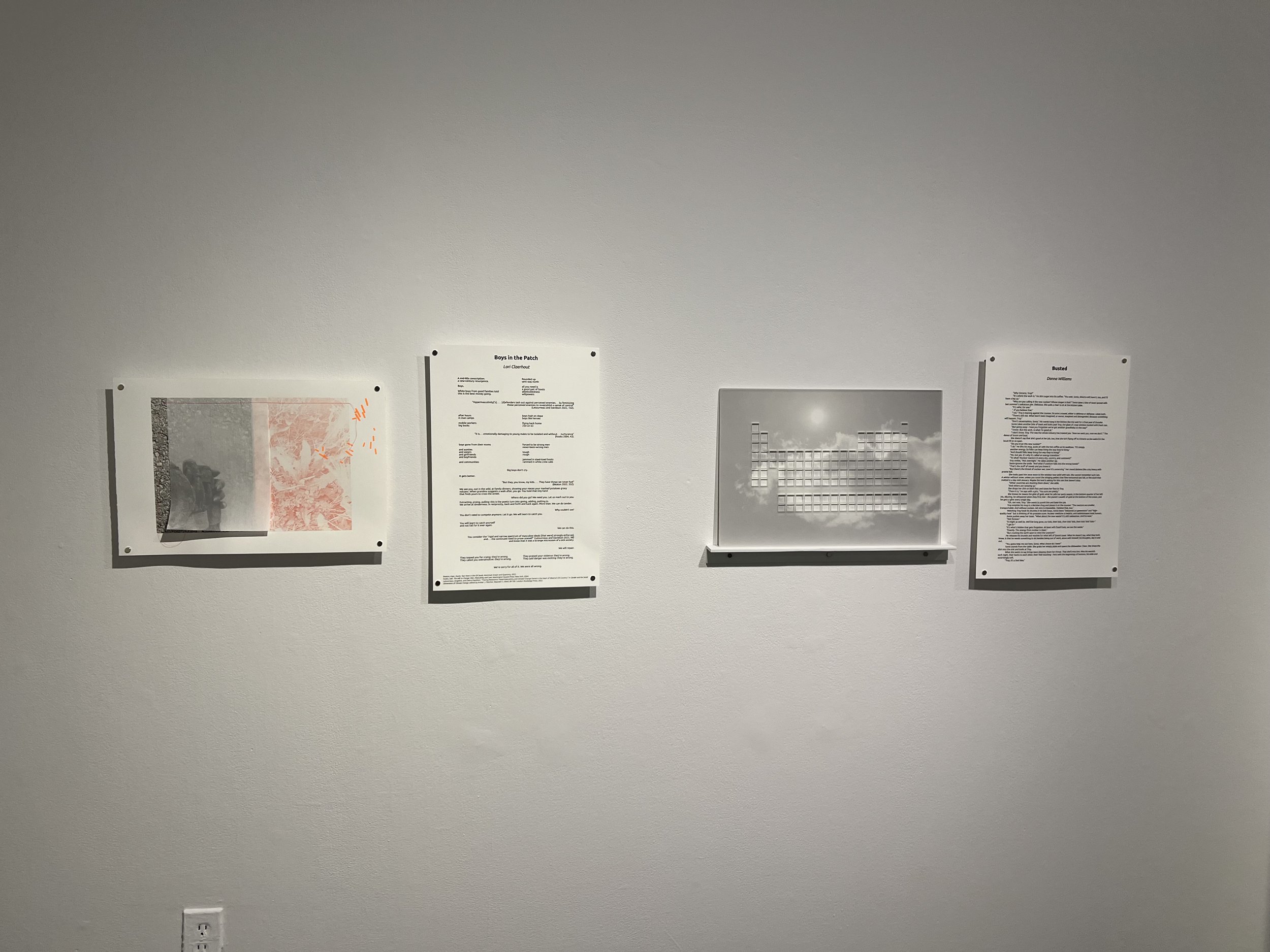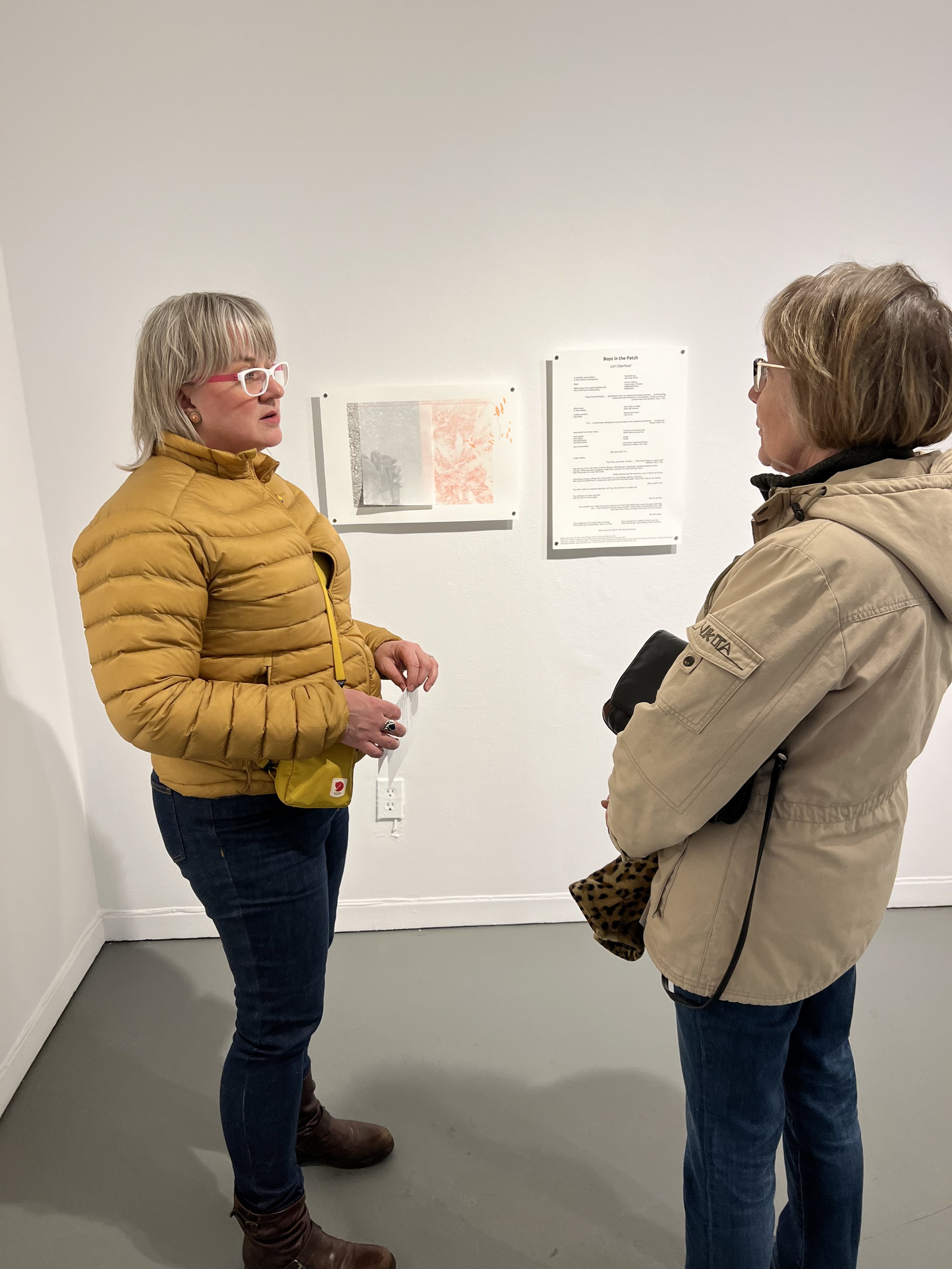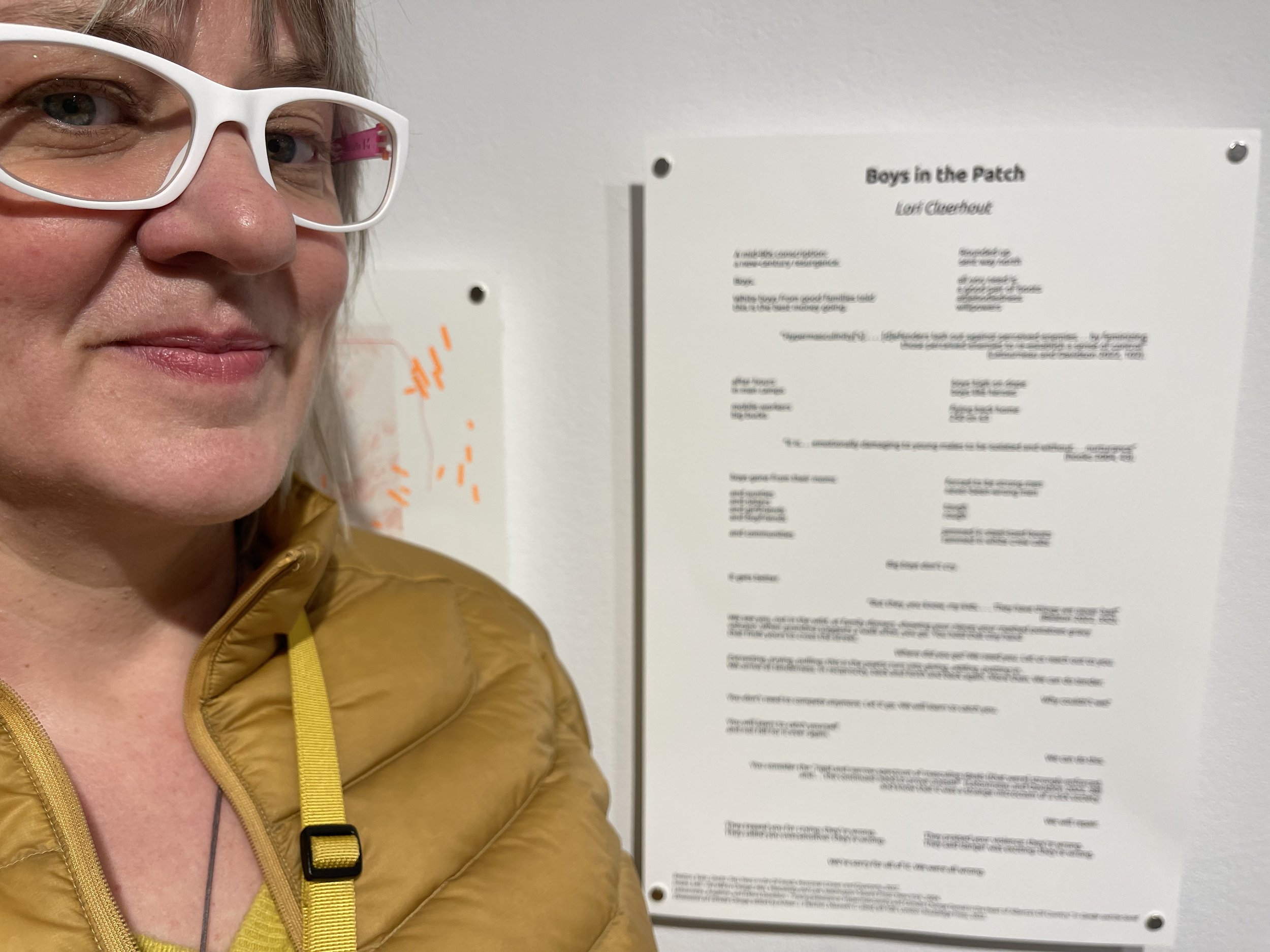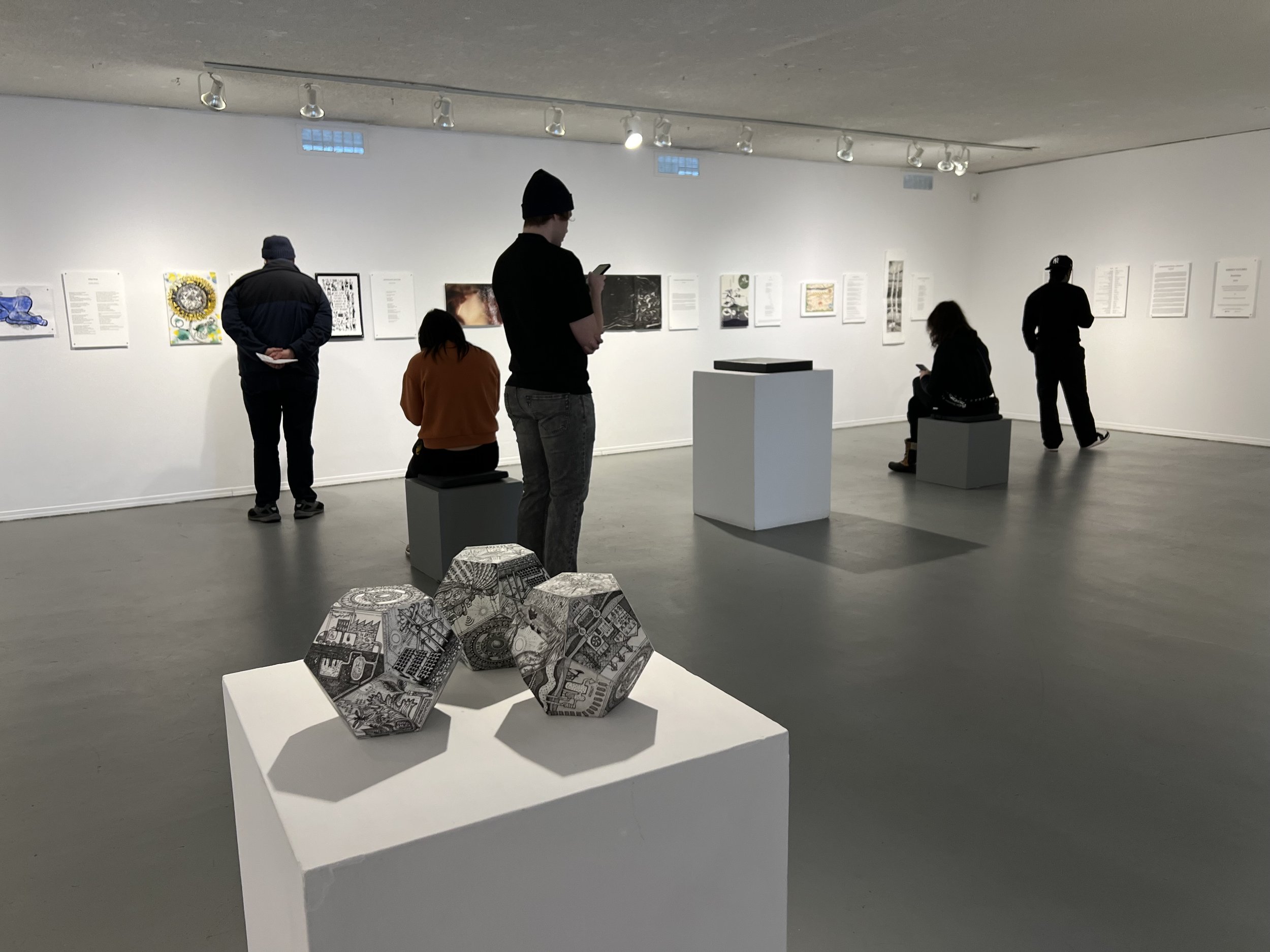Exhibitions
Dreamland Quilt installed in the Boreal Gallery at Mossy Trails
2024, May 29, Mossy Trails, near Athabasca, AB.
The Dreamland Quilt has found a home! Nestled between a birch and a poplar tree, its neighbours also include birch, rose, fern, moss, and many others.
My grandmothers, settler pioneer people from northern Europe, made quilts. They used materials available to them, like nearly-worn-out clothing, to make something new and comforting. Me too. The Dreamland Quilt is made from birch bark harvested from firewood burned in the stove that heats our house. The cross piece is from birch grown near a friend’s place on the shores of Jenkins Lake. Deer hide used to lash the bark columns to the cross piece were also harvested there. Brass brads and jump rings used to connect vellum paper to the birch bark were likely made in China.
Quilts have patterns and designs on top. Underneath, seemingly happening at random, dreams arrive. Maybe they entertain us; maybe they inspire our hopes and ignite our despairs. On this Dreamland Quilt, previously recorded dreams are typed onto semi-transparent paper and applied, where “imperfections” like typos, misspellings, and the cutting off of text all point to how dreams can be fractured, ethereal, and difficult to capture. The imperfections reflect how thoughts of both despair and hope are not perfect/ not complete/ not accurate: they are flawed too.
I typed these pieces using my mom’s 1960s typewriter. The visceral clacks and dings contributed to a feeling of travelling through time: at the moment of its arrival, the typewriter would have offered another type of hope, of independence for women during a time when they couldn’t rent an apartment or open a bank account without the signature of a man. The typewriter could accompany a woman to a workplace where she could earn her own money and potentially fulfil a dream.
Meanwhile, these “eyes open” dreams can spring from hope and despair, and also point to why we might make art. As I consider how this works for myself and those around me, I can’t help but consider our local Palestinian friend’s hopes and despairs. There has been good news recently: of eighteen family members she is looking to relocate, a few are on their way to Canada. The others wait while missiles fall.
So why, then, should we make art, when despairs seem great and hope seems tiny? One reason is to gather everyone together like in this moment; to cultivate hope, that things might become better; that they might evolve.
Evolution is my hope for this art piece in the forest at Mossy Trails. Like hopes, like despairs, its component parts will shift and change. Among the moss and trees and their ecosystems, my hope is that the assembled materials will evolve among interaction with bugs, birds, animals, fungi, lichens, rain, wind, and so on. In 50 years, we will all be lumps in the forest. I say this with great hope and little despair.
Photography by Monica Dahl at Bullfrog Images 2024
If you’re feeling despair about what’s happening in Palestine, and hope to help, consider contributing to our friend Rana’s fundraising campaign to bring her family here.
Local press: https://www.townandcountrytoday.com/athabasca-news/hidden-gems-lie-in-athabasca-countys-mossy-trails-8955083
The Energy Futures Portfolio Project
2024, March 1 - April 13. Harcourt House, Edmonton, AB. The portfolio is a collaboration among 60 printmakers, writers and energy experts, and guided by Alberta’s Energy Futures Lab. My contribution is a poem titled “Boys in the Patch,” a depiction of contemporary male-female relationships as situated in oil patch culture and an imagining of energy futures where boys and men aren’t sent to glorified jobs in tar sands work, and girls, women, queer, trans, and nonbinary folx aren’t subjected to hypermasculinized gaze and action. The poem came about in partnership with printmaker Heather Leier and exists alongside her companion print.
Also showing at VISAC gallery, Trail, BC. March 25 - May 2, 2024 and Leighton Art Center, Calgary. August 31 - October 27, 2024.
Hello Dreamland
2023, November 18. Duo show and co-production with Jovi Klak. Athabasca, AB.
My part of the show, Dreams of Hope and Despair, is a collection of linocut prints and three dimensional pieces assembled in response to our natural and social surroundings and how hope and despair show through them.
Consciously using what might otherwise be seen as unusable, these gatherings of found objects can start to create meaning when appearing in repetition. A sculptural piece includes bird-of-prey feathers collected on nature walks or errant screws and twine that seem to magically show up.
The Dreamland Quilt contains birch bark harvested from firewood burned in the stove that heats Lori’s house. Previously recorded dreams are typed onto semi-transparent paper and applied, where “imperfections” like typos, misspellings, and the cutting off of text all point to how dreams can be fractured, ethereal, and difficult to capture. The imperfections come to reflect how thoughts of both despair and hope are not perfect/ not complete/ not accurate: they are flawed too.
Dreamland quilt, L. Claerhout 2023
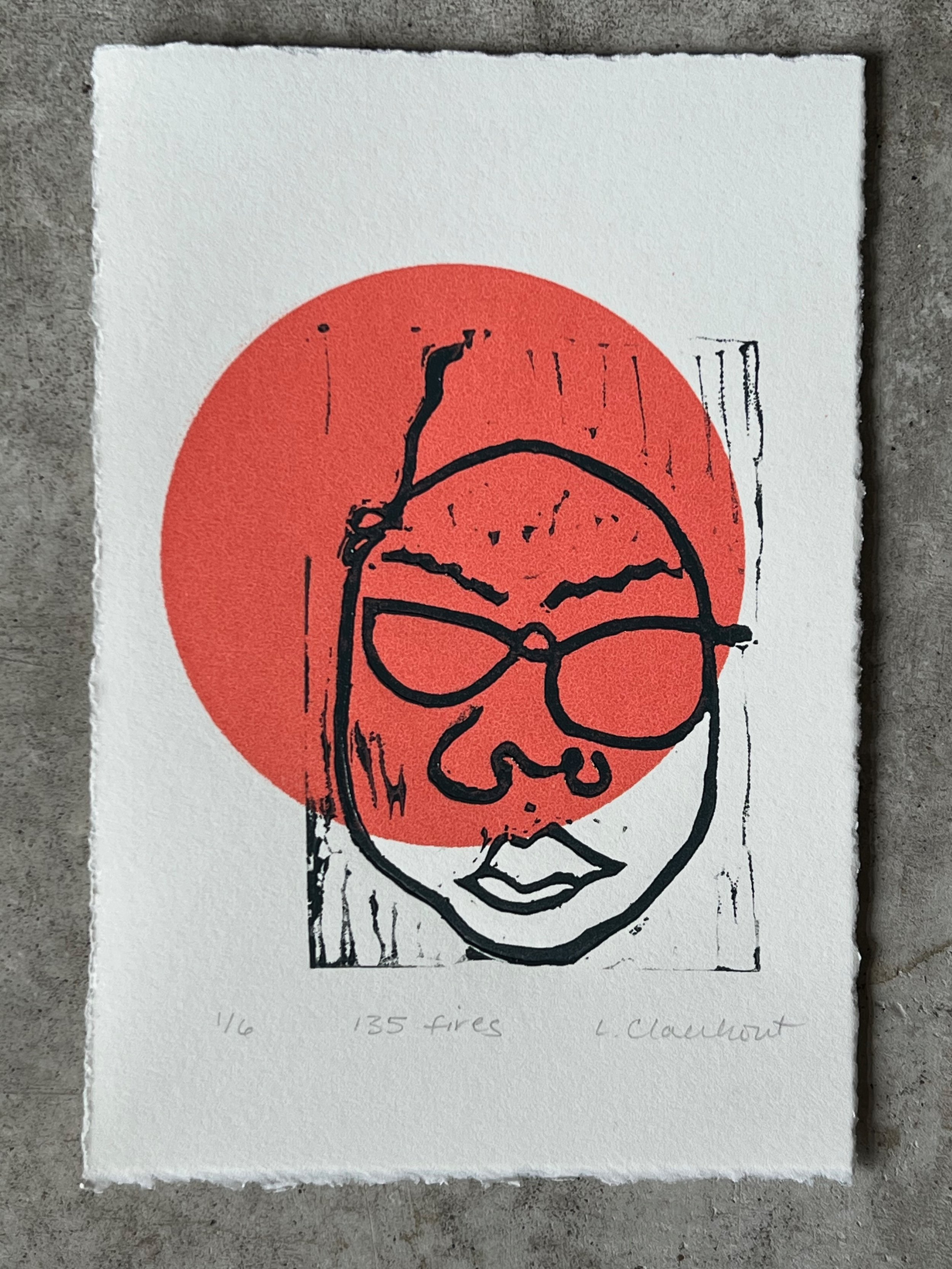
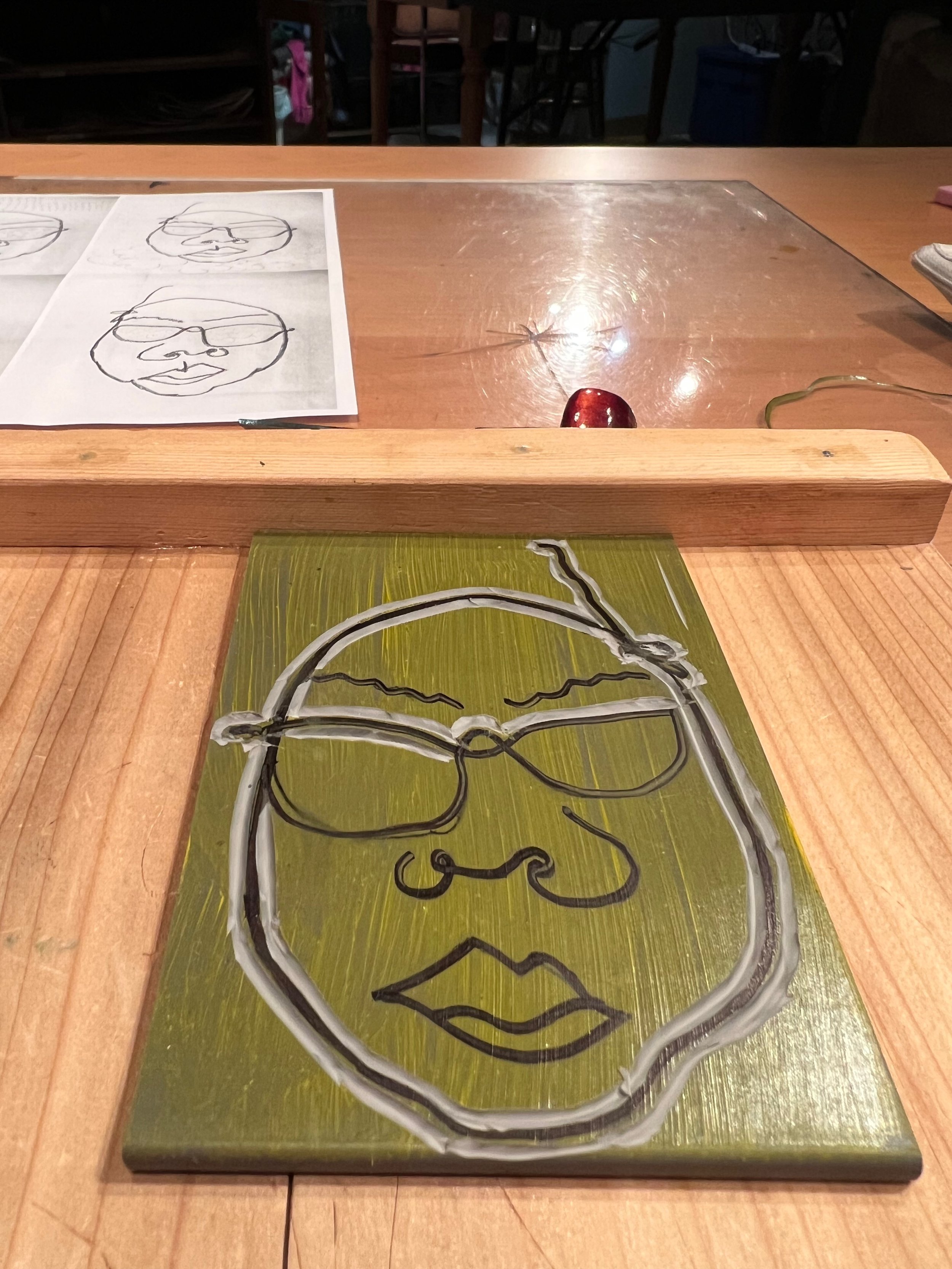
135 Fires
Shown in Hello Dreamland.
Summer 2023 began in late April when wildfires started burning in the forest near us. On the day I printed this piece, there were 135 fires burning in Alberta.
The orange circle was screen printed first on Stonehenge warm white paper. Next, a rendering of a blind contour self-portrait was carved and printed using a Woodzilla press in my home studio. 7” x 5”
Print run of 6 has found homes.
The Death of Face-to-Face at AU #1-3
These three monotype prints were in a group show on July 1, 2023 (with me for scale: they are 14x11” framed to 20x16”). I used a circular Gelli plate and office ephemera collected around the house in my grief and disappointment at the gutting of a local Athabasca University (AU) building earlier in the year. Showing them led to respectful conversations—including with people in positions to make positive change—about damage done, the inaccuracies of reporting, optimistic vision, and hope that can come from destruction and thoughtful criticism.
All three were personally purchased by a prominent AU executive member and are on display in their semi-public house.
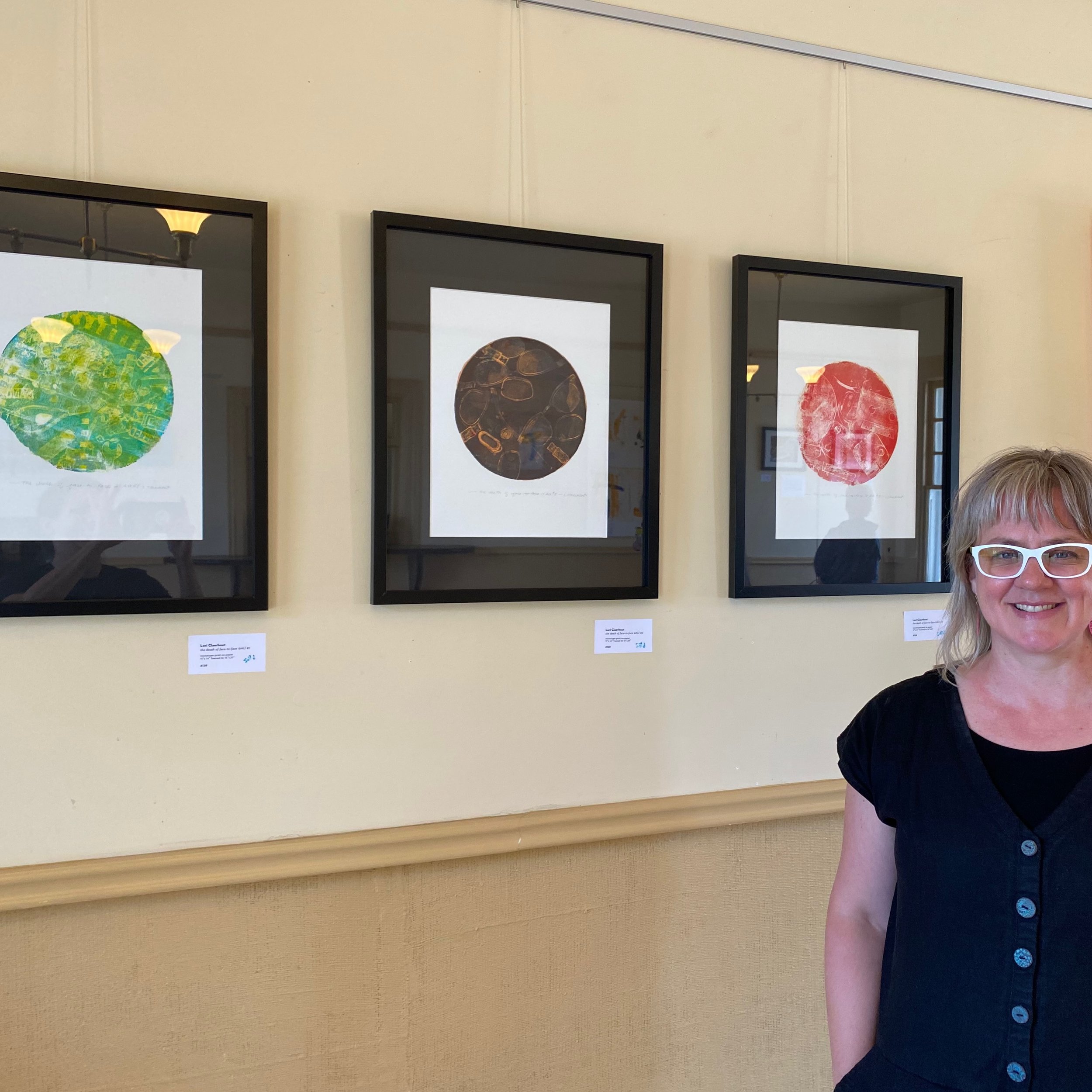
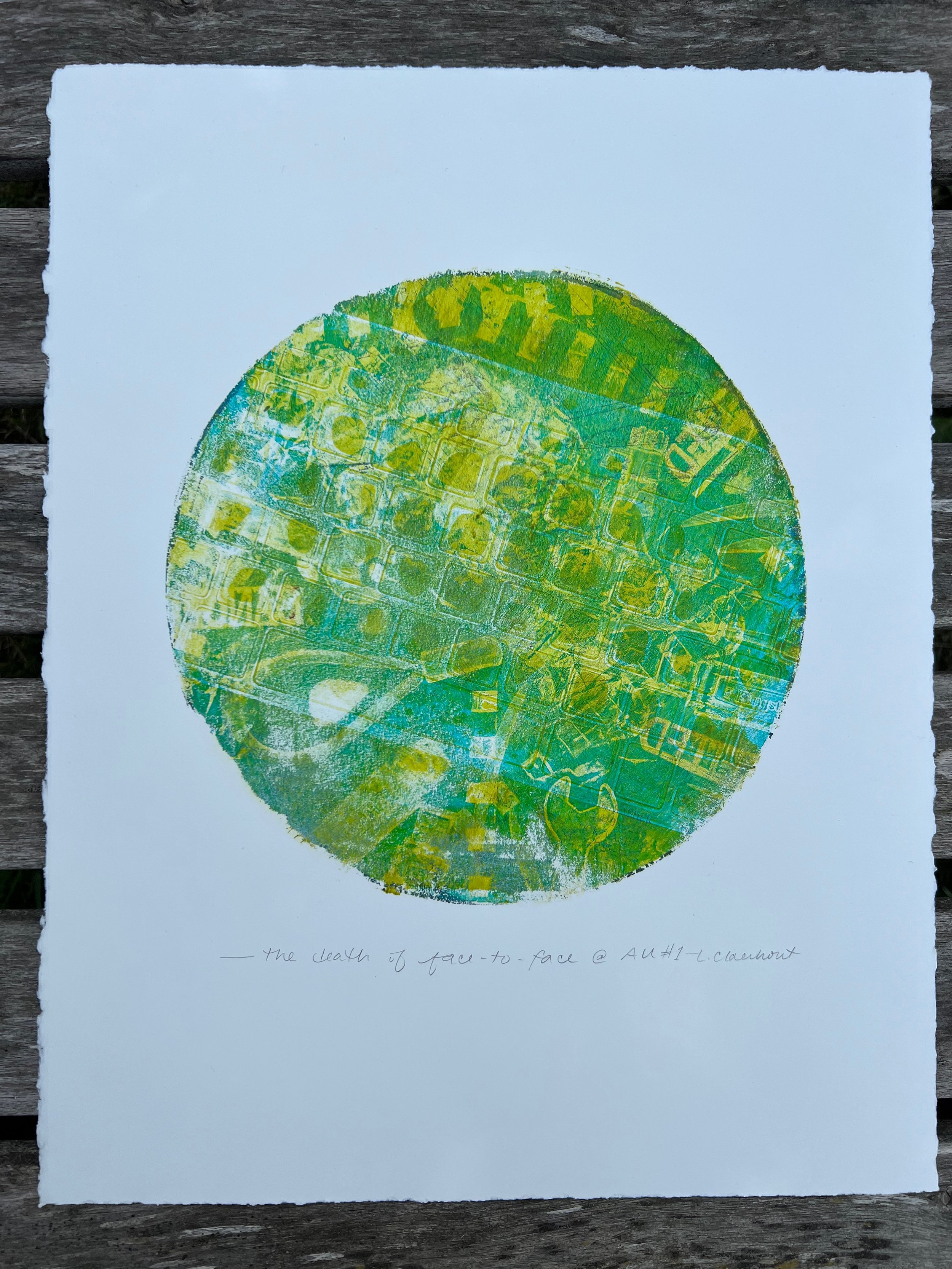
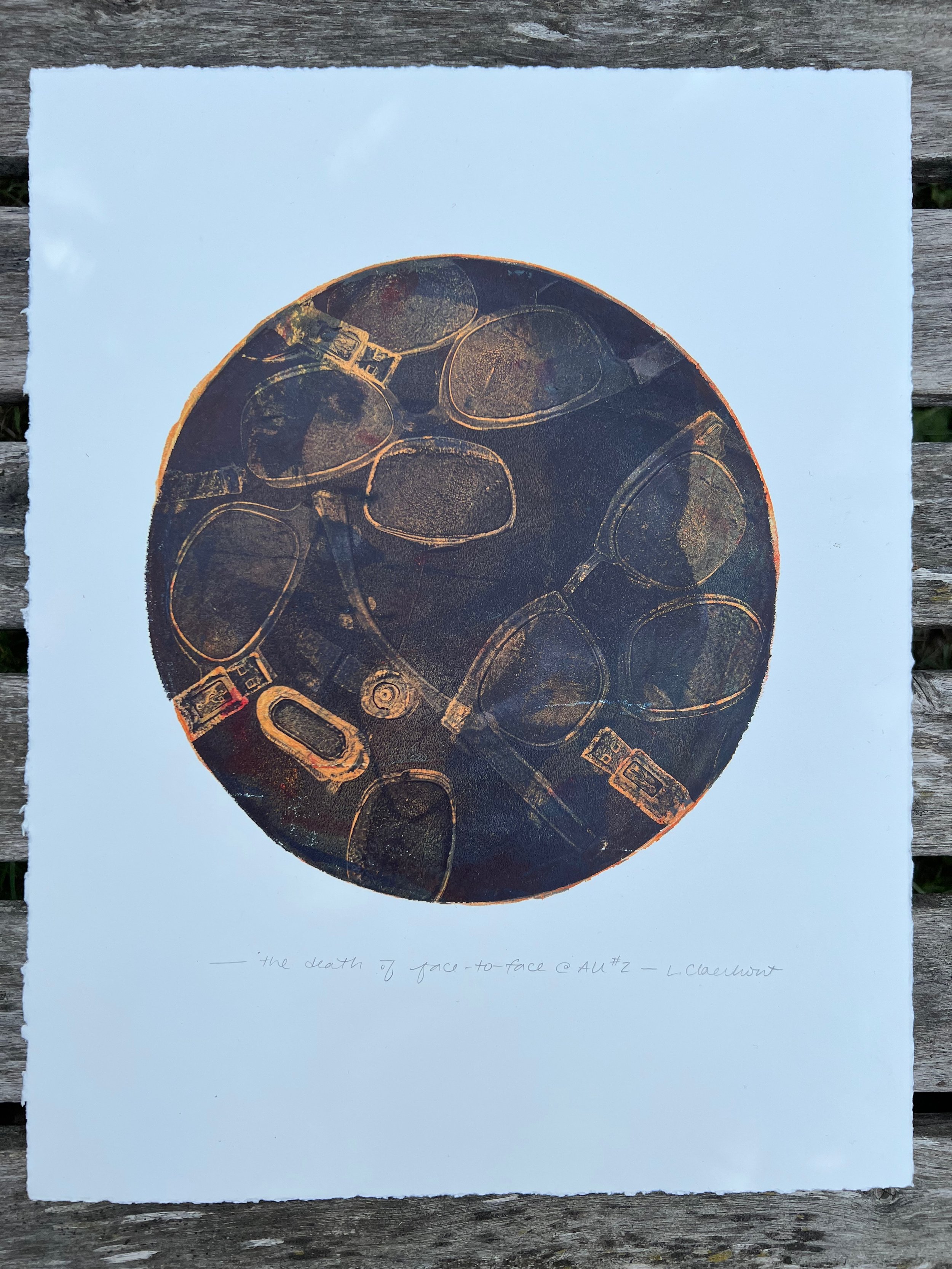
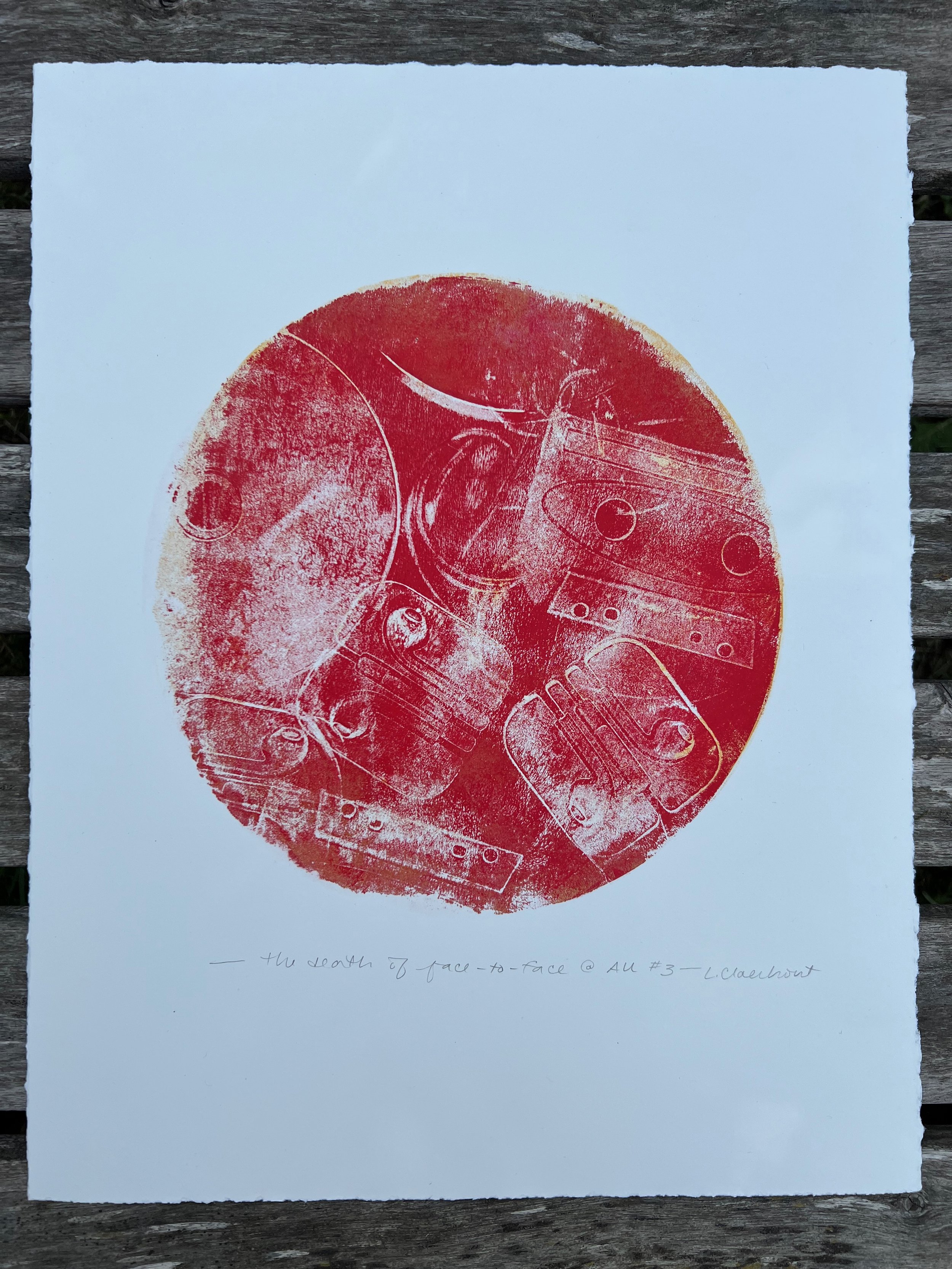
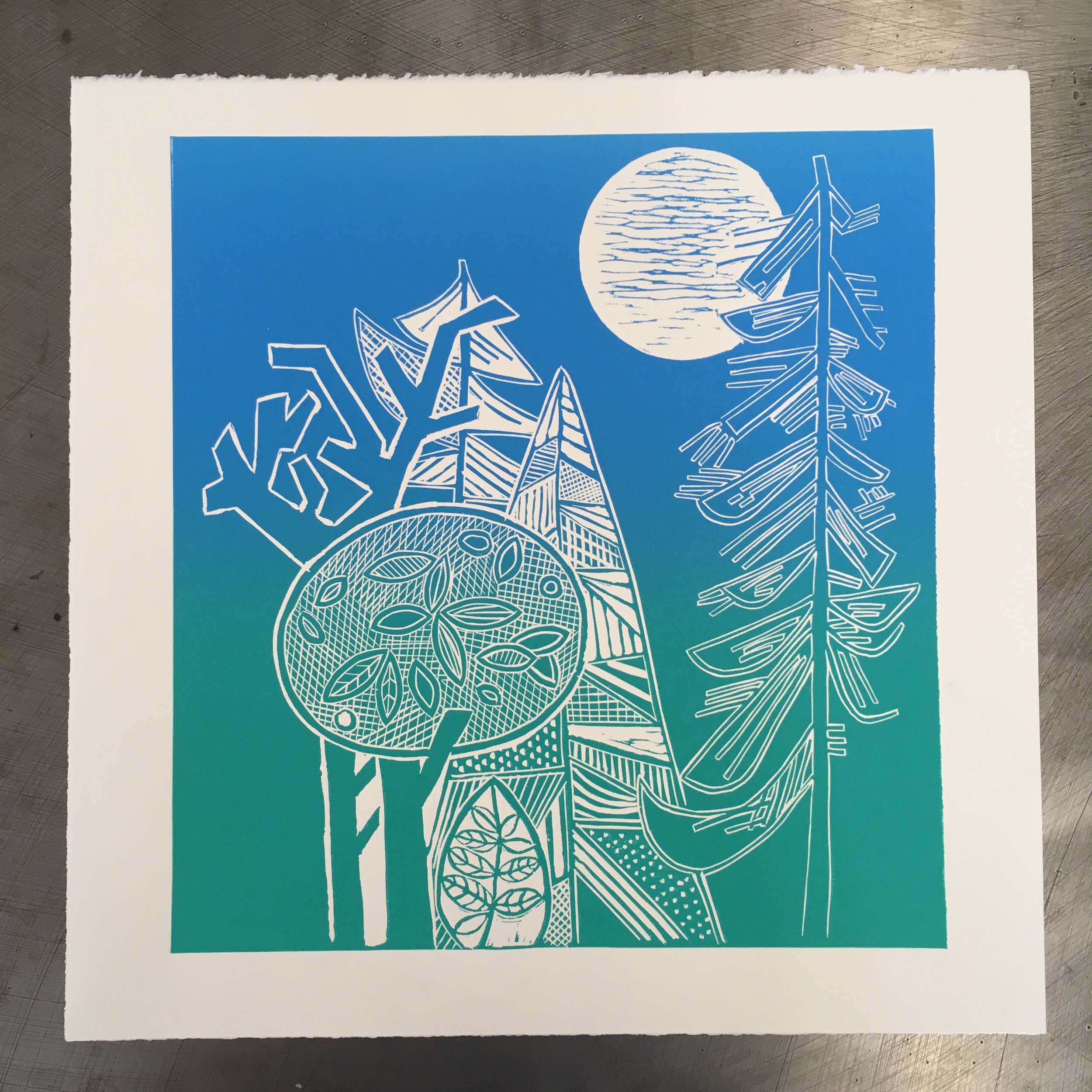
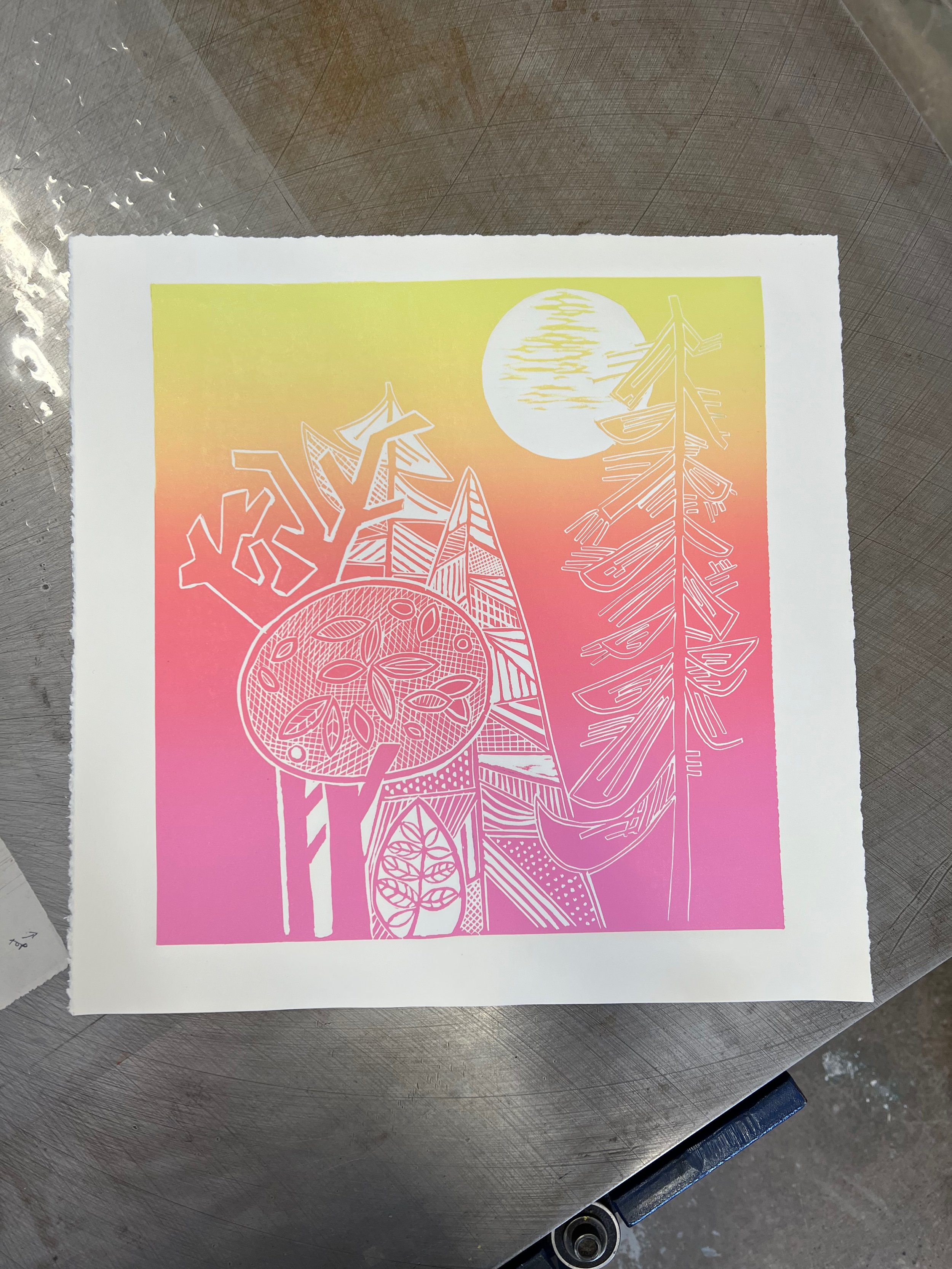

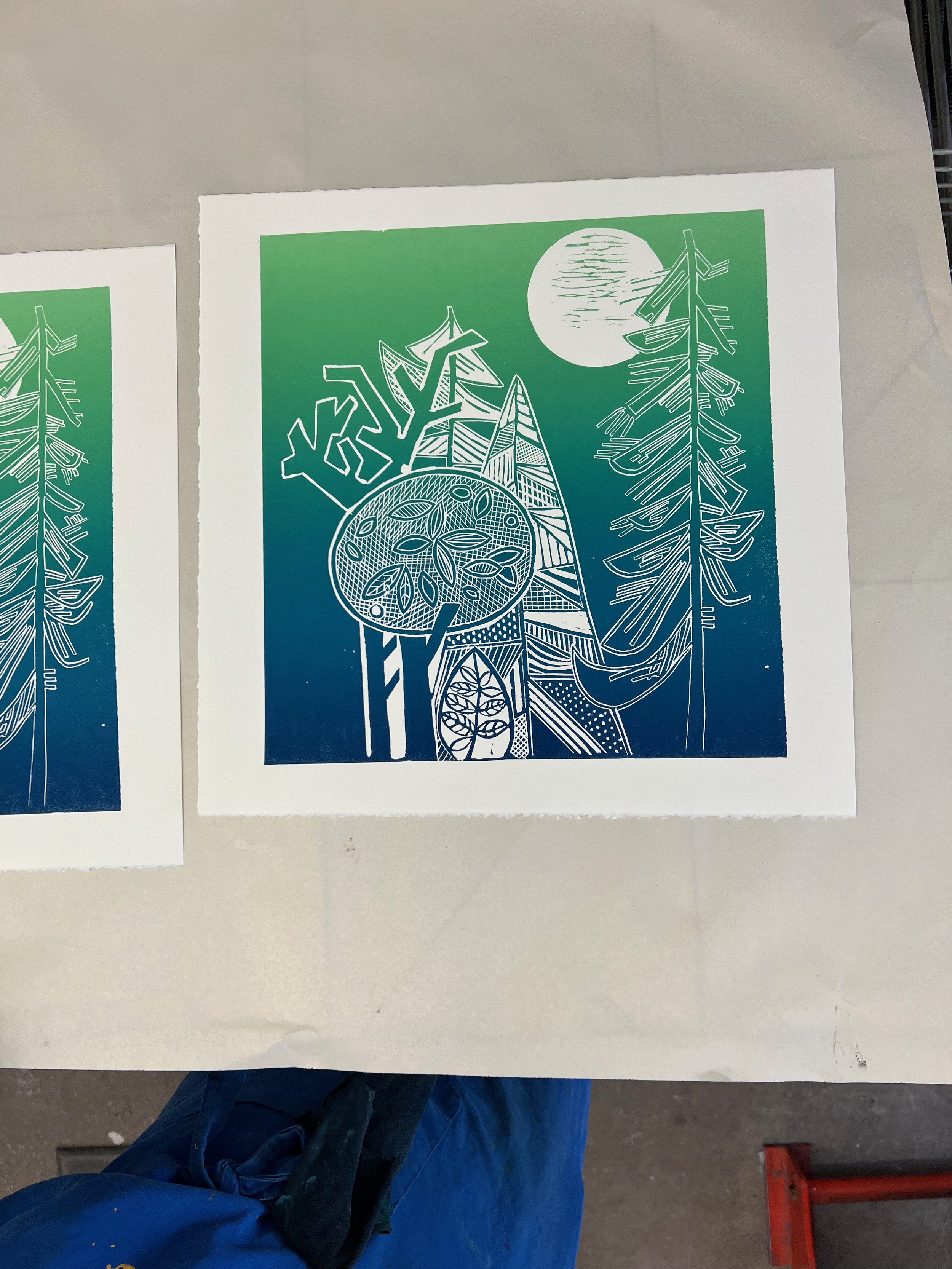
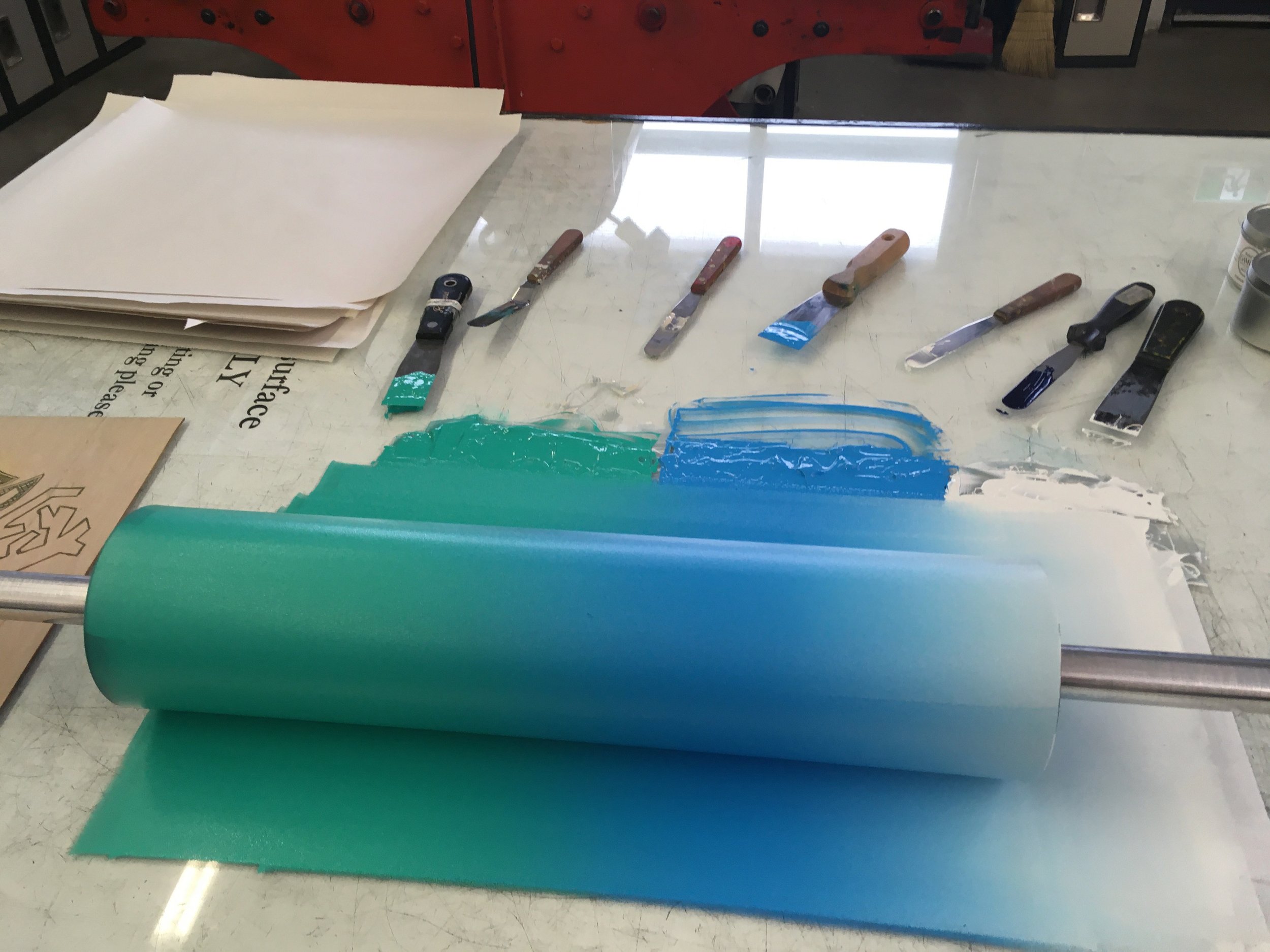
“Collective” linocut print
Group Show, 2022.
Carved in March 2020 while on zoom calls (like the rest of the world), this linocut print is heavily influenced by the mid-century storybook illustrations of Tom Vroman and calls to our shared need to assemble.
Prints were inked at Edmonton’s SNAP (Society for Northern Alberta Printmakers) and Hamilton, ON’s Centre[3] workshops using Gamblin oil-based inks and Stonehenge 250gsm paper. 12.75” x 12” print on 15 x 15” paper.
Some colourways still available. Please contact for purchase.








